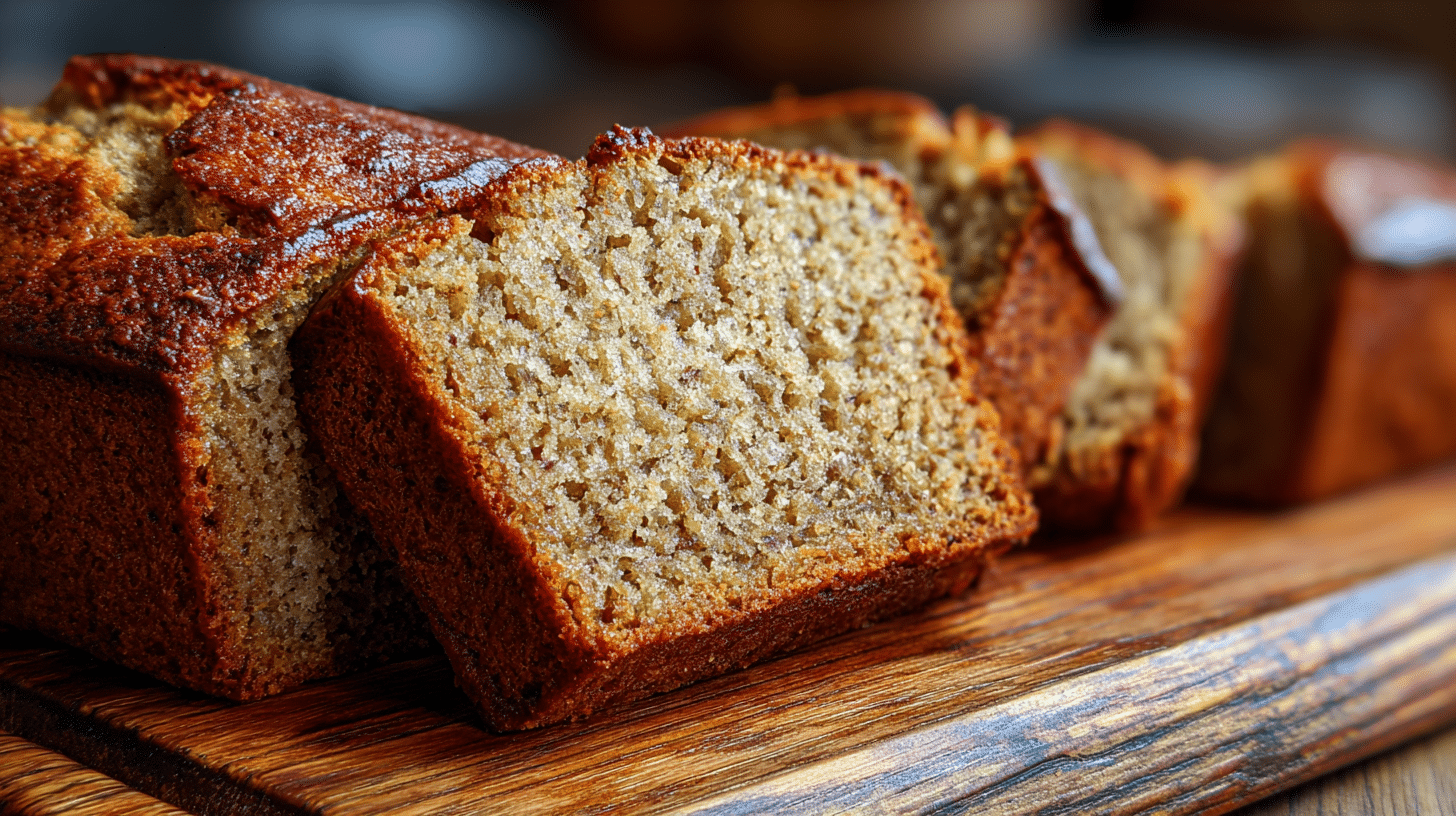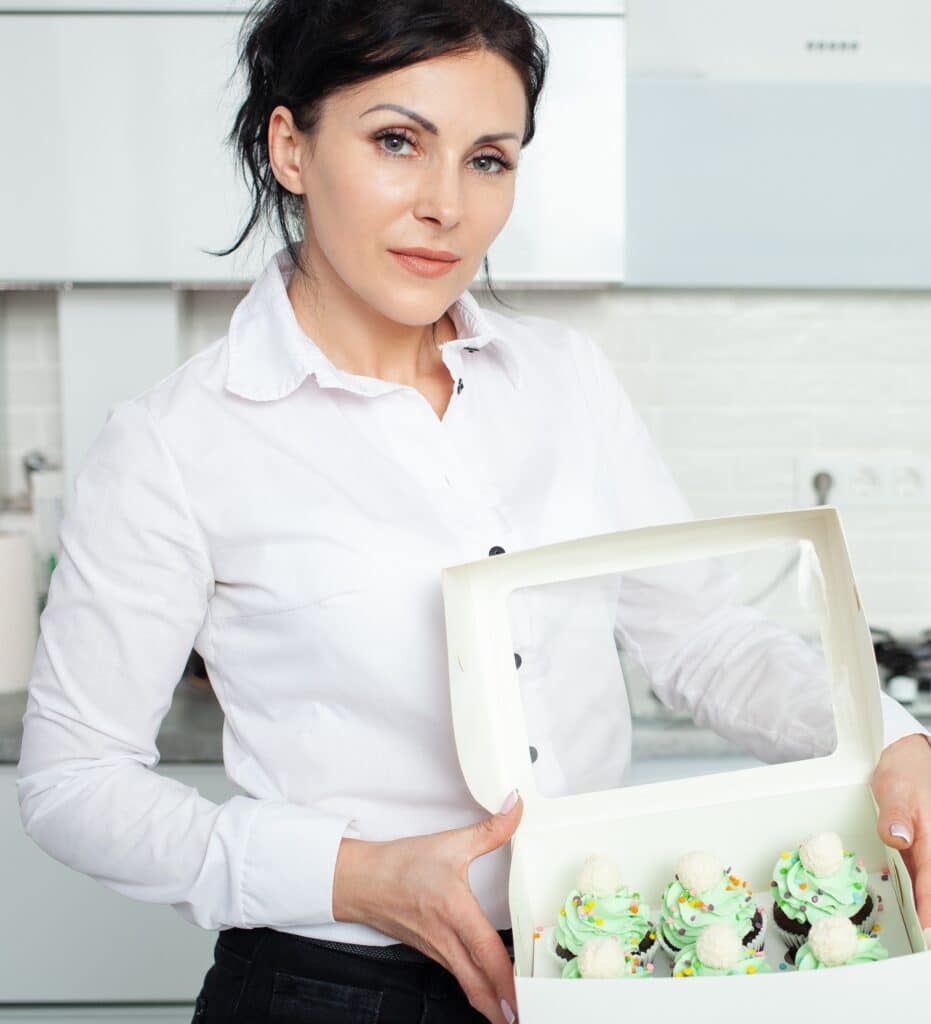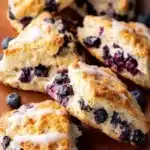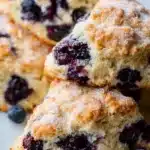Banana bread has been a kitchen staple for generations, but if you’re looking to add a modern spin to this beloved treat, angular banana bread is the upgrade you didn’t know you needed. This stylish, geometric variation not only delivers the moist, flavorful texture of traditional banana bread but also adds a striking aesthetic twist perfect for gifting, brunch spreads, or just making your daily baking feel a little more elevated.
In this article, we’ll break down everything you need to know to make the perfect angular banana bread— from essential ingredients and shaping techniques to moisture secrets, baking science, and common pitfalls to avoid. We’ll also explore healthier variations, creative add-ins, and compare it nutritionally to your everyday loaf.
Looking for inspiration? Try our Crispy Parmesan Zucchini Potato Muffins to accompany your banana bread brunch spread: Crispy Parmesan Zucchini Potato Muffins
Let’s dive into why angular banana bread is the trend every home baker should try.
Table of Contents
Table of Contents
Introduction to Angular Banana Bread
What Makes Angular Banana Bread Unique?
Unlike traditional rounded or domed banana bread, angular banana bread is baked in a specially shaped loaf pan with defined edges and straight sides. This results in a bold, modern presentation that slices cleanly into eye-catching, geometric servings.
But it’s not just about looks—angular bread pans can influence how the batter rises and bakes. The sharper edges create a firmer outer crust, helping lock in moisture and form a more stable loaf. This means better texture, more structural integrity, and a presentation that holds up beautifully, even after slicing.
The Rising Popularity of Shaped Baked Goods
In the age of Instagram-worthy bakes and creative presentation, angular baked goods are more than a gimmick—they’re part of a growing trend in home baking. From bundt cakes to cube croissants, shape-driven baking is influencing how we think about classics. Angular banana bread sits right at the intersection of nostalgic flavor and modern design.
Not only is it great for entertaining, but it also makes a fantastic homemade gift. Sliced angular banana bread, arranged with care, adds a touch of elegance and charm. Whether you’re going minimalist or adding flair with nuts and chocolate chips, the unique look elevates even the simplest recipe.
Discover great ideas like our Japanese Mounjaro Recipe for more modern takes on traditional foods: Japanese Mounjaro Recipe
Essential Ingredients for Perfect Angular Banana Bread
Core Ingredients with Nutritional Benefits
The base of any banana bread recipe lies in its ingredient synergy—each element plays a vital role in achieving the ideal texture and flavor. Here’s a look at what makes up the foundation of angular banana bread:
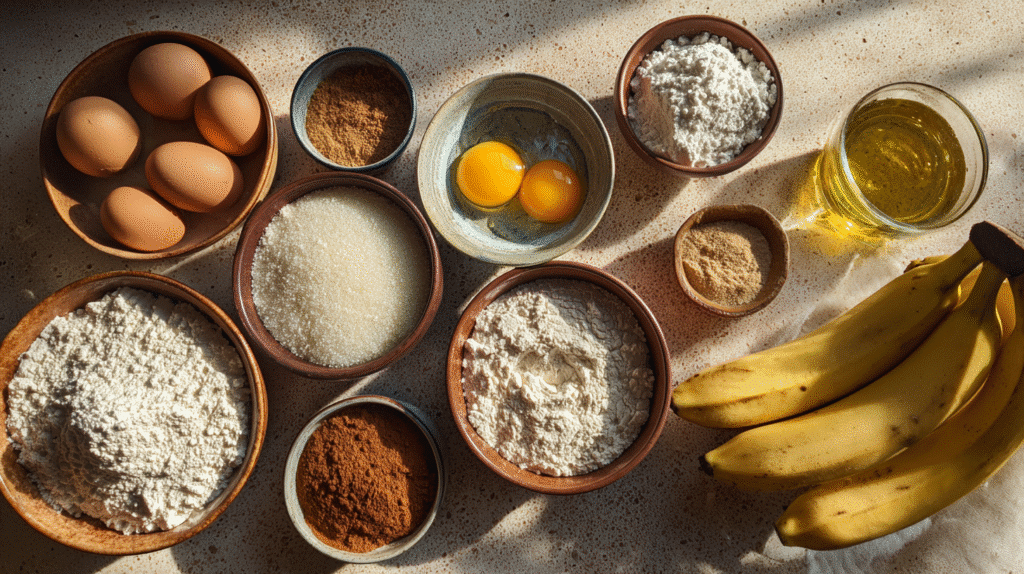
| Ingredient | Purpose |
|---|---|
| Ripe Bananas | Provide natural sweetness, moisture, and potassium |
| All-Purpose Flour | Offers structure while keeping the crumb tender |
| Granulated Sugar | Sweetens the loaf and contributes to browning during baking |
| Unsalted Butter/Oil | Adds richness and moisture; oil produces a softer crumb |
| Eggs or Substitutes | Bind ingredients and support structure; flaxseed meal works for vegan baking |
| Baking Soda | Leavening agent to make the bread rise |
| Salt | Enhances flavor and balances sweetness |
| Vanilla Extract | Adds depth and warmth to the flavor profile |
| Cinnamon & Nutmeg | Spices that enrich the aromatic and savory notes |
Pro Tip: Bananas should be deeply speckled or even black on the outside—this is when they’re at peak sweetness and softness.
Using high-quality ingredients ensures your loaf isn’t just beautiful—it’s packed with nutrients. Bananas contribute fiber and potassium, nuts bring in healthy fats, and choosing a quality flour can boost fiber if you opt for whole-grain.
Don’t miss our Natural Mounjaro Recipe with 4 Ingredients for a health-first take on minimalist cooking: Natural Mounjaro Recipe
Optional Add-ins to Elevate Flavor and Texture
While the classic banana bread is already a treat, angular banana bread gives you room to experiment with flavors and textures. Consider folding in one or more of these optional add-ins before baking:
- Chopped Walnuts or Pecans: Adds crunch and healthy omega-3 fats
- Chocolate Chips: Sweetens and adds richness for dessert-style loaves
- Shredded Coconut: Brings a tropical twist and chewy texture
- Dried Cranberries or Raisins: Adds a sweet-tart element
- Pumpkin Seeds or Chia Seeds: Boosts nutrition and texture
When adding mix-ins, be sure to fold them in gently to avoid overmixing the batter. Also, coat heavier ingredients like nuts and chocolate chips in a little flour to keep them from sinking during baking.
Check out our Mounjaro Pink Salt Recipe for another bold flavor idea to complement your baking: Mounjaro Pink Salt Recipe
Step-by-Step Guide to Baking Angular Banana Bread
Mixing Wet and Dry Ingredients Separately
The success of angular banana bread starts with the right preparation. Follow this tried-and-true method to ensure a moist, well-structured loaf every time.
Step 1 – Preheat and Prep:
- Preheat your oven to 350°F (175°C).
- Lightly grease your angular loaf pan or use a non-stick spray. The defined corners of angular pans need extra attention to prevent sticking.
Step 2 – Prepare Wet Ingredients:
In a large mixing bowl:
- Cream together ½ cup of unsalted butter or vegetable oil and ¾ cup of granulated sugar until the texture is light and fluffy.
- Beat in 2 large eggs one at a time. For a vegan option, combine 1 tablespoon of flaxseed meal with 3 tablespoons of water for each egg you’re replacing. Let the mixture rest for about 5 minutes until it thickens.
- Stir in 1 tsp vanilla extract.
- Mash 3–4 large overripe bananas and mix them in thoroughly until smooth.
Step 3 – Prepare Dry Ingredients:
In a separate bowl:
- Whisk together 2 cups of all-purpose flour, 1 tsp baking soda, ½ tsp salt, 1 tsp cinnamon, and ½ tsp nutmeg.
- Slowly incorporate the dry ingredients into the wet mixture, stirring gently. Stir just until combined—overmixing will result in a tough texture.
Baking and Shaping in an Angular Loaf Pan
Step 4 – Add Optional Ingredients:
- Fold in about 1 cup of optional add-ins, such as chopped nuts, chocolate chunks, or coconut flakes. Avoid over-stirring—this can flatten your loaf’s rise.
Step 5 – Pour and Shape Batter:
- Pour the batter into your prepared angular loaf pan. Use a spatula to level the top evenly.
- For optimal shape, gently tap the pan on the countertop to release air bubbles and help the batter settle into the pan’s corners.
Step 6 – Bake It Right:
- Bake for 60–70 minutes, depending on your oven and the depth of your pan.
- Avoid opening the oven during the first 45 minutes to prevent collapsing.
- Check doneness with a toothpick inserted in the center—if it comes out clean or with a few moist crumbs, it’s ready.
Step 7 – Cool and Slice:
- Allow the bread to rest in the pan for 10 minutes before moving it to a wire rack to cool completely.
- Once completely cool, slice into clean, geometric pieces that show off your angular artistry.
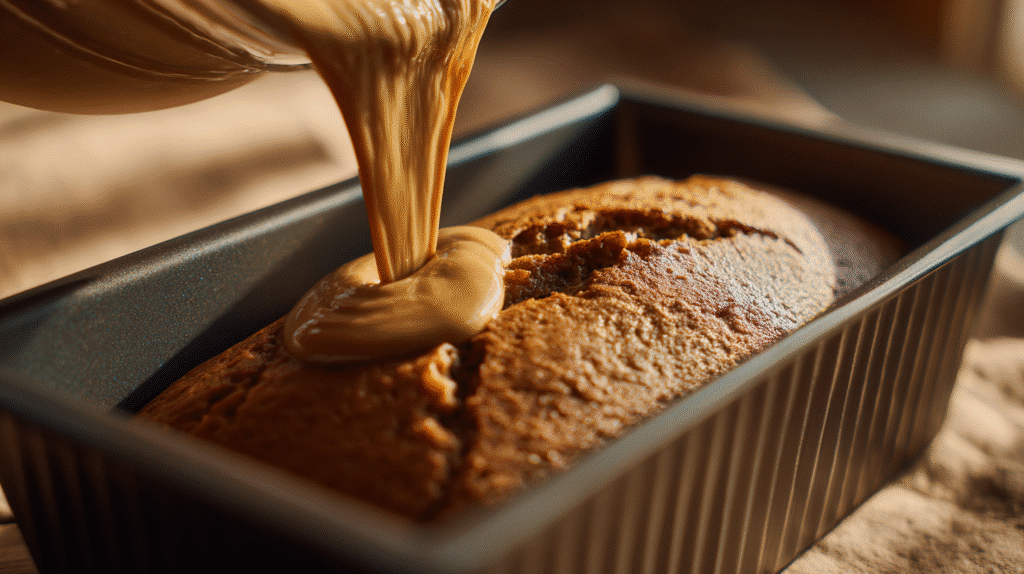
Pro Tip: For an even sharper loaf shape, refrigerate the bread for 20 minutes before slicing. This helps the structure set and keeps the edges defined.
Cooking Techniques to Master Angular Banana Bread
Avoiding Common Mixing Mistakes
Even with the best ingredients, the way you mix your batter can make or break your banana bread. Here are essential tips to master the mixing process:
- Don’t Overmix: After adding the dry ingredients, stir only until the flour is just incorporated. Overmixing activates gluten, which leads to a dense, chewy texture—far from the soft, cake-like crumb you want in angular banana bread.
- Cream Butter and Sugar Properly: This step aerates your batter, making it lighter and helping it rise better. Use a hand or stand mixer and beat for at least 3–5 minutes until fluffy.
- Room Temperature Ingredients Work Best: Cold eggs and butter won’t mix as well. Set them out for about half an hour so they reach room temperature before use.
- Be precise when measuring, particularly with flour: spoon it into the measuring cup, then level it off with a knife Too much flour = dry bread.
How to Maintain the Perfect Angular Shape
Baking banana bread with an angular shape isn’t just about looks—it also affects structure, moisture retention, and even how the loaf cools. Here’s how to get those crisp edges and clean corners every time:
1. Choose the Right Pan
- Use a high-quality angular loaf pan with well-defined straight edges.
- Silicone or lightweight metal pans can warp during baking, which ruins the shape. Go for sturdy aluminum or cast iron.
2. Prepare Your Pan Like a Pro
- Grease thoroughly with butter or non-stick spray, especially the edges and corners.
- For extra protection, line the pan with parchment paper cut to match the shape of the pan.
3. Evenly Distribute Batter
- Pour batter slowly and gently level it with a spatula.
- Tap the pan lightly against the counter to eliminate any air pockets that can deform the final loaf.
4. Control the Oven Environment
- Preheat the oven completely to 350°F and avoid repeatedly opening the door during baking.
- Bake on the middle rack to ensure even heat distribution and rise.
5. Cool Carefully
- After baking, let the loaf sit in the pan for 10 minutes to firm up. Removing it too soon can collapse the structure.
- Carefully move the loaf to a wire rack and let it cool fully before cutting.”
By mastering these shaping and baking techniques, your angular banana bread will not only taste divine but also look like it came from a professional bakery.
Check out our savory baking tips in the Crispy Parmesan Zucchini Potato Muffins post for more shape-control techniques: Crispy Parmesan Zucchini Potato Muffins
Choosing the Right Bananas for Banana Bread
Best Stage of Ripeness for Bananas
When it comes to baking the perfect angular banana bread, not all bananas are created equal. The secret lies in using overripe bananas—those dark, speckled ones you might normally toss out.
Here’s how to gauge banana ripeness for baking:
| Banana Appearance | Best For |
|---|---|
| Bright Yellow | Not sweet enough; too firm for baking |
| Lightly Speckled | Good, but may yield mild flavor |
| Mostly Brown or Black | Perfect—ultra-sweet, soft, and moist |
Why overripe bananas work so well:
- Higher sugar content enhances flavor and browning.
- Softer texture blends more easily into batter.
- Strong banana aroma carries through after baking.
Want to bake today but your bananas are still yellow? Here are some quick ripening hacks:
- To speed up ripening, put the bananas in a brown paper bag with an apple and leave them for 24 hours.
- Roast whole bananas with the peels on at 300°F (150°C) for 15–20 minutes, or until the skins turn black.
Why Overripe Bananas Work Best
The enzymes in bananas continue to break down starches into sugars as they ripen. This transformation:
- Adds natural sweetness, allowing you to slightly reduce added sugar.
- Increases moisture, which is critical for a tender banana bread crumb.
- Improves mixability, making your batter smooth and evenly flavored.
If you’re looking for inspiration on health-boosting ingredients that pair well with bananas, don’t miss our Natural Mounjaro Recipe for clean and simple options: Natural Mounjaro Recipe with 4 Ingredients
Secrets to Moist and Fluffy Angular Banana Bread
Tips for Achieving Perfect Moisture
If you’ve ever sliced into banana bread that looked amazing but tasted dry—chances are, the moisture balance was off. Getting your angular banana bread to that just-right texture starts with strategic ingredient choices and careful technique.
Here’s how to lock in moisture without ending up with soggy bread:
1. Use Overripe Bananas
We covered this earlier, but it’s worth repeating—dark, mushy bananas are liquid gold for baking. Their high sugar and moisture content ensures your loaf stays soft and flavorful.
2. Choose Oil for a Softer Crumb
While butter adds rich flavor, vegetable oil can make your banana bread softer and more tender. Try replacing all or half of the butter with neutral oil like canola or sunflower.
| Fat Type | Texture Impact |
|---|---|
| Butter | Rich flavor, firmer crumb |
| Oil | Moist, lighter texture |
3. Don’t Overbake
Even an extra 5 minutes can dry out your loaf. Set a timer and check doneness with a toothpick. Remove the bread once it comes out with just a few moist crumbs.
4. Add Moisture Boosters
A little extra richness can go a long way. Consider:
- 1 tbsp sour cream or Greek yogurt in the batter
- 1–2 tbsp applesauce as a partial egg substitute
- Use brown sugar in place of white, or mix both equally to boost moisture.
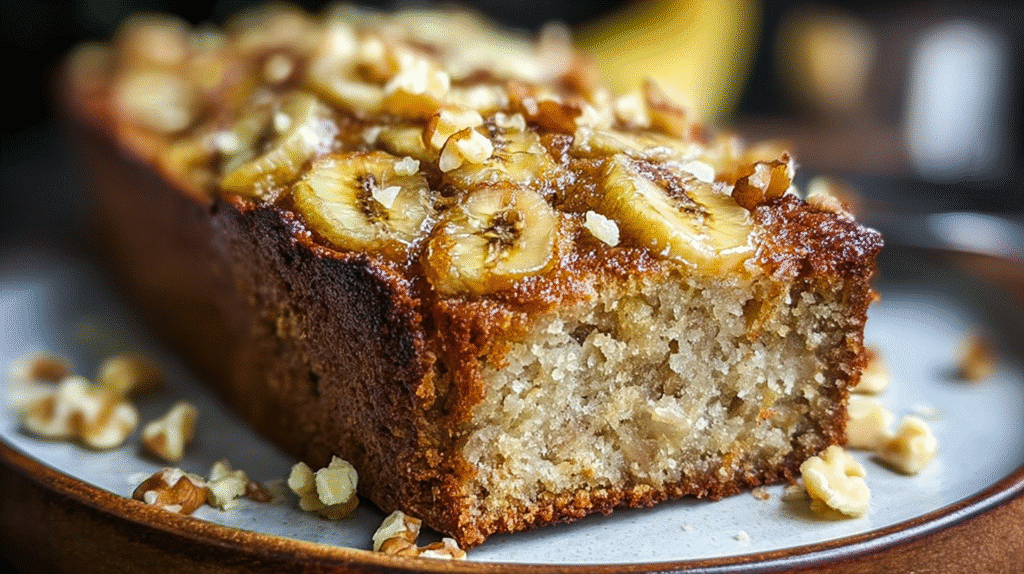
5. Wrap and Rest
After cooling, wrap your banana bread in plastic wrap or foil and let it sit overnight at room temperature. This resting phase lets the moisture redistribute, making the bread even softer the next day.
Ingredients That Enhance Softness Without Sogginess
The key to the best moist angular banana bread lies in balance—wet, but not gummy. Here are ingredients that help without weighing the loaf down:
- Eggs: Provide protein for structure but also trap moisture
- Vanilla Extract: Helps mask bitterness from overripe bananas and enhances overall softness
- Cinnamon and Nutmeg: While dry spices, they intensify warmth, making the loaf feel richer
- Nut Butters (in small amounts): Almond or peanut butter can add both moisture and flavor depth
For added nutritional balance and richness, consider adding crushed walnuts—they bring texture and healthy fats that enhance the overall mouthfeel.
Check out our Mounjaro Pink Salt Recipe for ideas on balancing flavor intensity with natural ingredients: Mounjaro Pink Salt Recipe
Customizing Angular Banana Bread for Every Taste
Vegan, Gluten-Free, and Low-Sugar Variations
Banana bread is one of the most flexible baked goods out there, and angular banana bread is no exception. With a few smart swaps, you can transform this treat into a version that’s better suited for your lifestyle—whether you’re avoiding gluten, cutting back on sugar, or ditching animal products.
Vegan Angular Banana Bread
You don’t need eggs or dairy to create a delicious, fluffy loaf. Try these simple substitutions:
| Ingredient | Vegan Alternative |
|---|---|
| Eggs | Flax eggs (1 tbsp flaxseed + 3 tbsp water) |
| Butter | Coconut oil or vegan margarine |
| Milk (if used) | Oat milk or almond milk |
Add-ins like dark chocolate chips or pecans are often naturally vegan—just check the label.
Gluten-Free Banana Bread
To make your bread gluten-free without compromising structure:
- Use 1:1 gluten-free baking flour with xanthan gum already included.
- Avoid overmixing—gluten-free batters are more delicate and can toughen quickly.
- Add a spoonful of applesauce or Greek yogurt for moisture compensation.
Low-Sugar Banana Bread
Bananas already bring natural sweetness, so you can cut back on added sugar significantly.
- Replace white sugar with coconut sugar, maple syrup, or stevia baking blends.
- Use only ½ the recommended sugar if your bananas are extra ripe.
- Add unsweetened coconut flakes or raisins for a sweet lift without extra sugar.
Creative Add-ins: From Chocolate to Coconut
One of the most fun parts of making banana bread with an angular twist is customizing the flavors. Here are some of the best ingredient combos to elevate your loaf:
Sweet & Nutty
- Chocolate chips + chopped walnuts
- Almond butter swirl + banana slices on top
- Maple glaze + pecan topping
Tropical Vibes
- Crushed pineapple + coconut flakes
- Diced mango + macadamia nuts
Spiced & Cozy
- Ginger + cardamom for a chai flavor profile
- Pumpkin puree + extra cinnamon for a fall twist
Don’t miss our Japanese Mounjaro Recipe for more fusion-style cooking ideas that play with traditional flavors: Japanese Mounjaro Recipe
Common Mistakes to Avoid When Baking Banana Bread
Overmixing, Wrong Temperature, and More
Even experienced bakers sometimes end up with dry, sunken, or rubbery banana bread. With angular banana bread, these mistakes can be even more visible due to the defined shape and sharp lines of the loaf. These are the top mistakes people make—and how you can avoid them.
1. Overmixing the Batter
Why it’s a problem: Overmixing develops gluten, leading to a tough, dense loaf instead of the light, tender crumb you want.
Fix it: Once you combine the wet and dry ingredients, mix just until you no longer see streaks of flour. Fold in any mix-ins gently at the end.
2. Using Under-Ripe Bananas
Why it’s a problem: Firm, yellow bananas don’t have enough natural sugar or moisture to sweeten and soften the bread.
Fix it: Only use bananas that are heavily speckled or black. Need ripe bananas fast? Bake them at 300°F for about 15 minutes.
3. Baking at the Wrong Temperature
Why it’s a problem: If your oven runs too hot or too cold, your loaf could burn outside while staying raw inside—or worse, collapse in the middle.
Fix it: Always preheat the oven to 350°F (175°C) and use an oven thermometer to check actual temp. Bake in the center rack for even heat circulation.
4. Opening the Oven Too Early
Why it’s a problem: It can cause the bread to fall before it has fully set, especially in the center.
Fix it: Do not open the oven during the first 45 minutes of baking. Use the oven light to keep an eye on the progress.
5. Incorrect Pan Size or Type
Why it’s a problem: Using a rounded or oversized pan can affect the shape and depth of the loaf, making it harder to get clean angular edges.
Fix it: Use a high-quality angular loaf pan that fits about 8–9 cups of batter. Grease thoroughly and line with parchment for clean removal.
Troubleshooting Angular Shape and Texture Issues
Even with perfect batter, your banana bread can run into shape issues. Here’s how to ensure those sharp, angular edges stay crisp and clean.
- Uneven Rise: This may happen if the batter isn’t spread evenly. Tap the pan on the counter to settle the batter before baking.
- Dry Edges and Undercooked Center: This is often a sign of uneven oven heat or the loaf being too thick.
- Fix it by insulating the pan with a baking strip or foil, and bake at a slightly lower temp (325°F) for a longer time.
- Soggy Bottom: Caused by underbaking or poor airflow under the pan.
- Place the loaf on a wire rack after baking and avoid wrapping it until completely cool.
By avoiding these common pitfalls, your angular banana bread will be as flawless in structure as it is in flavor.
Learn more about ingredient harmony in our Natural Mounjaro Recipe with 4 Ingredients, a simple but precise dish that also relies on balance: Natural Mounjaro Recipe with 4 Ingredients
Nutrition Facts and Health Benefits
Caloric Breakdown Per Serving
Angular banana bread isn’t just about looks—it offers a comforting blend of flavor and nourishment. Depending on your ingredient choices, this loaf can be surprisingly wholesome.
Here’s a breakdown of a typical slice of angular banana bread made with the core ingredients:
| Nutrient | Amount (Per Serving) |
|---|---|
| Calories | 250–300 kcal |
| Protein | 5–7 grams |
| Carbohydrates | 35–40 grams |
| Fiber | 3–5 grams |
| Fat | 10–15 grams |
| Sugar | 12–18 grams |
| Key Nutrients | Potassium, Vitamin C, Iron |
Health Benefits of Main Ingredients
- Bananas: High in potassium, bananas help regulate blood pressure, support heart health, and aid digestion. They’re also rich in vitamin C and natural sugars that provide energy.
- Nuts (Optional): Walnuts and pecans add omega-3 fatty acids, which are good for brain function and reducing inflammation. They also boost protein and add fiber.
- Whole Wheat or Alternative Flours: Swapping all-purpose flour with whole grain or oat flour increases fiber content, supports gut health, and provides longer-lasting energy.
- Eggs or Flaxseed: Eggs deliver protein and essential fats. For vegans, flaxseed is an excellent alternative that also contributes omega-3s and fiber.
- Spices like Cinnamon and Nutmeg: These aren’t just flavorful—they carry antioxidants and anti-inflammatory properties.
For more healthy swap ideas, check out our Vegan Cream Cheese article, which shows how to replace dairy in baked goods and spreads (link to be added if available).
Comparing Angular vs. Traditional Banana Bread
| Feature | Angular Banana Bread | Traditional Banana Bread |
|---|---|---|
| Visual Appeal | Clean geometric slices, modern presentation | Rounder top, rustic appearance |
| Moisture Control | Better heat distribution in edges | Can overbake or underbake more easily |
| Customization Flexibility | High—works with gluten-free, vegan, or low-sugar | Moderate—usually designed for classic prep |
| Portion Consistency | Easy to slice into uniform servings | Often inconsistent due to domed top |
| Nutritional Profile | Similar core, enhanced by healthy add-ins | Standard base unless modified |
Angular banana bread doesn’t just win in aesthetics—it also gives you the same nutritional goodness, with the bonus of being easier to customize and portion cleanly.
Discover great ideas like our Mounjaro Pink Salt Recipe, which pairs beautifully with sweet and savory baked goods: Mounjaro Pink Salt Recipe
🥗 Nutrition (Per Slice – Approximate):
| Nutrient | Amount |
|---|---|
| Calories | 270 kcal |
| Protein | 6 grams |
| Carbohydrates | 36 grams |
| Dietary Fiber | 3–4 grams |
| Total Fat | 12 grams |
| Saturated Fat | 5 grams |
| Sugar | 16 grams |
| Sodium | 190 mg |
| Potassium | High (from bananas) |
| Vitamin C | Moderate |
| Iron | 6% Daily Value |
For more recipes follow me in Facebook and instagram .
Frequently Asked Questions About Angular Banana Bread
What is the number one mistake made when making banana bread?
The most common mistake is overmixing the batter. Once you combine your dry and wet ingredients, mixing too vigorously can activate the gluten in the flour, leading to a dense and rubbery loaf. To keep your angular banana bread soft and moist, stir gently—just until no dry streaks remain.
What is the secret to a moist banana bread?
The key to moist banana bread lies in three areas:
Use overripe bananas with black or heavily speckled peels—they’re loaded with natural sugar and moisture.
Add oil or a mix of oil and butter for a softer texture.
Avoid overbaking—check with a toothpick around the 60-minute mark and pull the loaf once it comes out clean or with a few moist crumbs.
Optional add-ins like Greek yogurt, applesauce, or flax eggs also help retain moisture, especially in vegan versions.
What’s in Chrissy Teigen’s banana bread?
Chrissy Teigen’s famous banana bread includes:
Ripe bananas
Vanilla pudding mix
Bittersweet chocolate chunks
Coconut
Eggs and canola oil
Her version leans into the indulgent side with moist, cake-like texture and rich flavors. You can adapt your own angular banana bread by adding chocolate chips and coconut for a similar effect—with the bonus of an eye-catching loaf shape.
What’s the best banana for banana bread?
The best bananas for banana bread are very ripe or overripe—soft, brown, and even blackened. These bananas:
Mash easily
Are packed with natural sugars
Enhance the bread’s moisture and flavor
Avoid firm, yellow bananas—they’re too starchy and won’t deliver the same sweetness or softness. If you’re short on ripe bananas, bake them at 300°F (150°C) for 15–20 minutes to speed up the ripening process.
Conclusion
Angular banana bread isn’t just a visual upgrade—it’s a baking experience that brings together style, structure, and flavor in a single loaf. Whether you’re slicing into it for breakfast, wrapping it up as a gift, or showing off your geometric baking skills on social media, this modern twist on a beloved classic delivers on every front.
From using the perfect overripe bananas to mastering shaping and moisture retention, we’ve walked you through everything needed to bake angular banana bread like a pro. With its clean lines and tender crumb, this is more than just banana bread—it’s a statement.
Don’t miss our Natural Mounjaro Recipe with 4 Ingredients for minimalist, health-driven recipes to complement your baking journey: Natural Mounjaro Recipe with 4 Ingredients
Print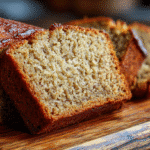
Angular Banana Bread
- Total Time: ~85 minutes
Description
This angular banana bread recipe is a modern twist on a classic favorite, baked in a geometric loaf pan for clean, sharp slices. It’s moist, flavorful, and easy to customize with your favorite add-ins like walnuts or chocolate chips. Perfect for breakfast, snacking, or showing off your baking style!
Ingredients
- 3 to 4 large ripe bananas, mashed
- 2 cups all-purpose flour
- ¾ cup granulated sugar
- ½ cup unsalted butter (softened) or vegetable oil
- 2 large eggs, or flaxseed meal as a vegan substitute (1 tablespoon flaxseed + 3 tablespoons water per egg)
- 1 teaspoon baking soda
- ½ teaspoon salt
- 1 teaspoon vanilla extract
- 1 teaspoon ground cinnamon
- ½ teaspoon ground nutmeg
- Optional: 1 cup of add-ins like chopped walnuts, pecans, chocolate chips, or shredded coconut
Instructions
- Preheat Oven to 350°F (175°C) and grease your angular loaf pan or line it with parchment paper.
- Cream butter/oil and sugar in a mixing bowl until light and fluffy.
- Add eggs one at a time, mixing well. Stir in vanilla extract and mashed bananas until smooth.
- In a separate bowl, combine flour, baking soda, salt, cinnamon, and nutmeg.
- Gradually fold dry ingredients into the wet mixture. Stir until just combined—do not overmix.
- Fold in optional add-ins like chocolate chips or walnuts if using.
- Pour batter into angular loaf pan, spreading evenly. Tap the pan gently to release air bubbles.
- Bake for 60–70 minutes, or until a toothpick inserted into the center comes out clean.
- Cool in pan for 10 minutes, then transfer to a wire rack to cool completely before slicing.
Notes
- For vegan version: Use flax eggs and oil instead of eggs and butter.
- Bananas should be very ripe or overripe (black skins are perfect).
- Don’t open the oven door early—wait at least 45 minutes to prevent collapse.
- Tap the pan gently before baking for a clean angular shape.
- Prep Time: 15 minutes
- Cook Time: 60–70 minutes
- Category: Dessert / Breakfast
- Cuisine: American
